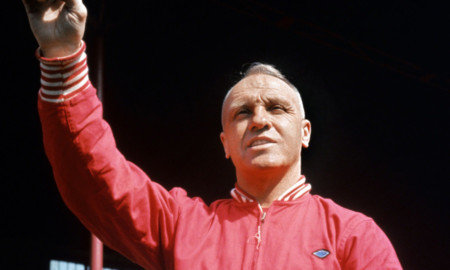
Liverpool’s great, charismatic manager makes Mourinho look dull by comparison
Chelsea have been celebrating the return of “The Special One” this month and journalists and fans alike have been licking their lips at the prospect of more of Jose Mourinho’s famous one-liners.
The Portuguese icon is the most quotable manager of the modern era, but he comes nowhere near the entertainment value provided by the all-time master.
Next Monday marks the 100th anniversary of the birth of Bill Shankly and, when he was manager of Liverpool between 1959 and 1974, he made Mourinho look dull!
His dry humour, combined with his single-minded passion for football and his beloved Liverpool, made Shankly the greatest provider of what this generation would call “sound bites”.
Perhaps his most oft-repeated quote is the one that sums his own character up so perfectly.
“Some people believe football is a matter of life and death,” he said. “I am very disappointed with that attitude.
“I can assure you it is much, much more important than that.”
His stance on winning can be best illustrated by: “If you are first, you are first. If you are second you are nothing,” and: “We beat them four nil and they were lucky to get nil”.
Former players told of his ferocious reaction when he scored in a five-a-side game and it was ruled out by the acting referee, first team full-back and quiet man, Chris Lawler.
“You haven’t spoken for a year,” fumed Shanks, “and the first thing you come out with is a lie!”
These days it’s not politically correct for a manager to show disrespect to his closest city rivals. That never bothered Shankly.
“If Everton were playing at the bottom of the garden, I’d close the curtains,” he declared.
For emphasis, he added: “In my time at Anfield, we had the best two teams on Merseyside Liverpool and Liverpool reserves.”
Then there was: “The difference between Everton and the Queen Mary is that Everton carry more passengers!”
On awaiting his neighbours’ arrival for a derby game at Anfield, Shankly gave a box of toilet rolls to the doorman and said: “Give them these when they arrive. They’ll need them!”
Shanks lived for football. He once registered in a Belgian hotel, giving his home address as Anfield that’s where I live.”
And at one point, a story emerged that he’d taken his wife to see a match at Rochdale as an anniversary present. He denied it.
“Of course I didn’t,” he said. “It was her birthday.”
To Shankly, football was a simple game.
Explaining what the off-side rule should be, he said: “If a player is not interfering with play or seeking to gain an advantage, what’s he doing on the field?”
To his striker, Ian St John, he gave the advice: “If you’re not sure what to do with the ball, just pop it in the net and we’ll discuss your options afterwards.”
Perhaps his favourite “son” was centre-half and skipper Ron Yeats, the man he dubbed “a colossus”.
“With him in defence, we could play Arthur Askey in goal,” he announced.
In one game, Yeats was lying on the ground after a clash.
Shankly’s assistant, Bob Paisley, reported: “Big Ron’s concussed. He doesn’t even know who he is.”
Shankly growled: “Tell him he’s Pele. He might play a bit better!”

Enjoy the convenience of having The Sunday Post delivered as a digital ePaper straight to your smartphone, tablet or computer.
Subscribe for only £5.49 a month and enjoy all the benefits of the printed paper as a digital replica.
Subscribe